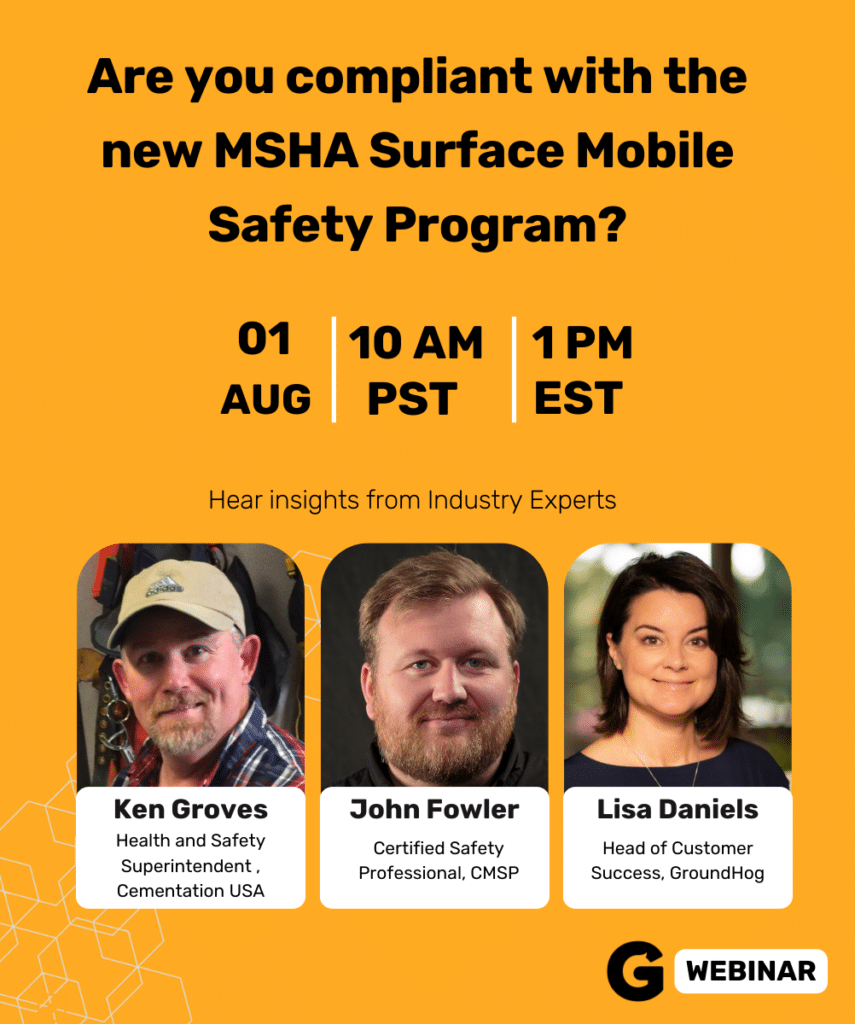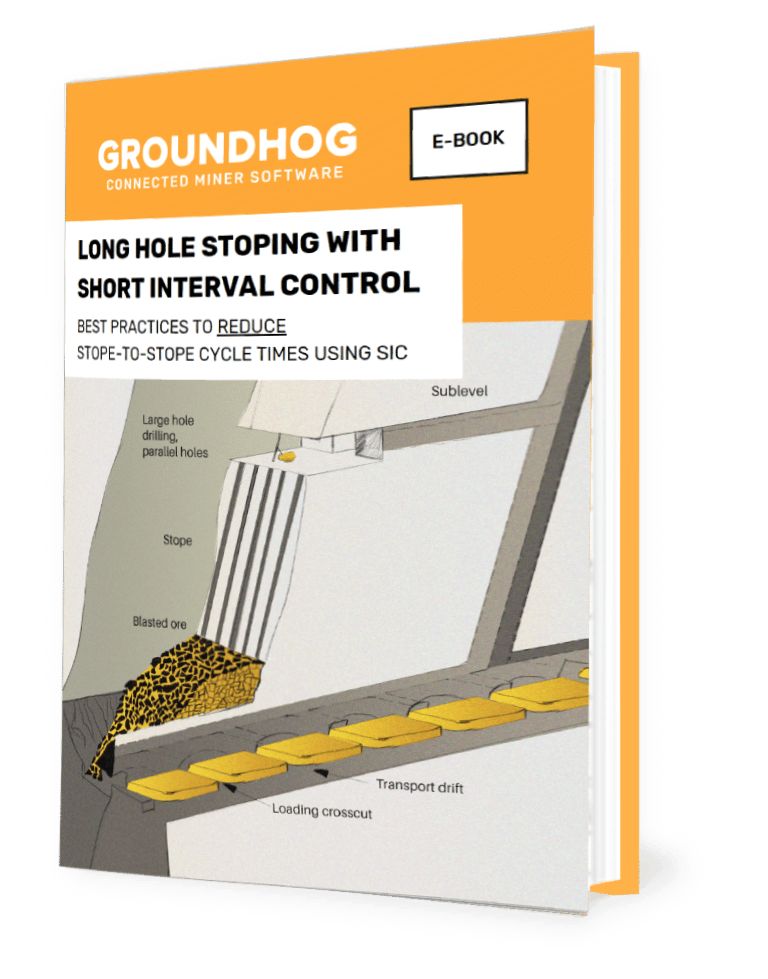We have been focusing on Real Time Location Systems (RTLS) in our Mine Digitization and Automation series. Last time we talked about why providing accurate location updates and actionable insights in real-time empowers crews to make informed decisions quickly and how Groundhog’s RTLS has advanced features beyond our competition, Newtrax or MST.
In talking about hardware, however, it is also important to talk about installation and other factors that come into play.
Understand RTLS requirements
Before starting the installation, it’s crucial to understand the specific requirements of your RTLS project. Determine the area to be covered, the number of assets or personnel to be tracked, the desired accuracy level, and any potential obstructions that might affect the BLE signal.
Select Appropriate BLE Beacons
An RTLS system requires two types of beacons to be installed. For the beacons that go on the wall or roof, choose beacons that support mesh networks, have larger battery life, and have a larger range. These beacons are called anchors.
For beacons installed on equipment or personnel, consider specialized beacons that can be easily attached to helmets/belts for personnel or easily set up in the cab. These beacons are called tags.

Design the Anchor (BLE-Beacon) Placement Strategy
Define the coverage area where you plan to deploy the RTLS system and design the anchor placement strategy. Strategically position anchors to ensure optimal signal coverage and minimize signal interference and achieve the desired accuracy. The anchor density will depend on the size and complexity of the area, but a higher density typically results in better tracking accuracy.
In a typical GroundHog implementation, we place an anchor every 40m. We connect 10 anchors in each direction in a single row. With this, we can cover point to point distance of 800m. We follow the line of sight as a guideline (using laser pointers) with a maximum distance between anchors of 40m. These anchors form a mesh network that connects with the gateway, and the gateway pushes position information to the server.
Prepare for Installation
Gather necessary tools and equipment for the installation, such as screws, adhesives, mounts, zip ties, laser pointers, and a drilling machine (if needed).
Install Anchors
- Mounting Options: The anchors can be screwed to the walls or zip tied to the wire mesh on the roof. Make sure the chosen mounting option is appropriate for the surface and environment.
- Strategic Placement: Place the anchors as per the placement strategy discussed above. We recommend placing it on the roof to minimize the risk of tampering or accidental damage.
- Testing and Calibration: After mounting the anchors, conduct tests to ensure proper signal coverage. Adjust the positioning of the anchors if needed to optimize the RTL system’s performance. GroundHog uses in-house tools to monitor the mesh and associate it with the location in the mine in the RTLS software based on the unique ID.
Deploy Tags
Tags are installed on equipment and personnel. Associate tag with the equipment or personnel in the RTLS software based on the Unique ID.
Set up RTLS Software and Integration
Install the RTLS software and integrate it with any other software required. GroundHog integrates RTLS data with OpsCenter. Anchor and Tag’s unique ID is configured in the Ops Center.
Perform Integrated testing: Thoroughly test the entire system end to end to verify its accuracy and reliability and data integration into the software. We test various scenarios, such as personnel tracking, equipment tracking, and areas with potential signal interference.
Advantages of having BLE beacons
BLE Hardware Infrastructure
As discussed, there are many technology options available. In our experience, expensive and/or complex are not highly prized attributes. And these qualities don’t only extend to the hardware itself – installation adds to the cost, and if there are other requirements, like Wi-Fi or receivers, it can take that much longer to achieve any ROI from your efforts.
But the expenses associated with repairs or replacements in case of malfunction can also be substantial. We all know it is a challenging environment – the more hardware underground, the more ponderous the network required to make it work, and the higher the chances something will break.
This is why Groundhog’s solution of using Bluetooth Low Energy (BLE) beacons to collect location data makes so much more sense:
- Total cost of ownership is less with no requirement for wi-fi or receivers.
- Battery life is high – approximately 3-4 years – greatly reducing replacement costs and eliminating concerns around frequent recharging.
- When repair or replacement is required, costs are usually more affordable.
BLE – Data Integrity and Availability
BLE beacons exchange information directly between themselves, resulting not only in faster communication but also a lack of need for a constant connection to store data. This is important because:- The moment equipment or personnel reach the surface or any designated point, the information becomes instantly available in the operations center or control room. GroundHog’s RTLS ensures data integrity even during brief periods of connectivity loss, a unique feature setting it apart from other providers that have encountered issues with data loss under similar circumstances.
A Full Solution That Keeps a Focus on Safety
The BLE-enabled data collected instantly from your mine’s RTLS seamlessly integrates into the comprehensive GroundHog mine management system, unlocking a range of functionalities that elevate overall efficiency and safety within the GroundHog platform.
The integration of operational workflows with safety workflows is just one key differentiating factor, allowing Safety Managers the ability to effortlessly locate incidents and utilize the real-time Incident and Hazard Management system for immediate recording. It is rare to find such an integrated approach among vendors, but Groundhog takes pride in offering this streamlined integration that significantly enhances:
- Incident management
- Hazard monitoring
- Maintenance operations (well-maintained equipment is safer equipment)
At Groundhog, our software and design background, along with a focus on the underground environment, helps us build better products, and we take pride in the ability to bring fresh, innovative perspectives to a full-service platform designed to solve problems and let you focus where you should – on the safety of your people, and the efficiency of your operations.
To know more about real time location tracking
https://groundhogapps.com/rtls-real-time-location-tracking-for-underground/
Do Follow our LinkedIn Newsletters-
https://www.linkedin.com/newsletters/mine-digitization-automation-6924713123673235456/



